On the Asia House dragon
Bill Heinrich ’81
“It would have been tedious work except that it was ambitious, self-directed, and had nothing to do with classes or credits. What made it something to look forward to was the enjoyment of working together with a group of wonderful people.”
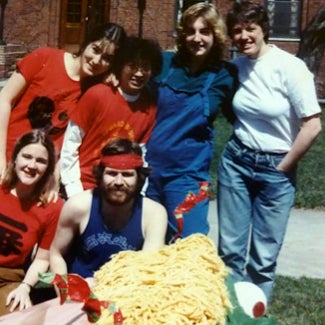
In the fall of 1976, I was freshman and had the good fortune to live in the old theological seminary building behind Fairchild Chapel. We had a nice mix of people all of whom had professed some sort of interest in Asia. Hence, the name: Asia House.
I cannot recall how I learned about what was going on in the basement. Since it was taking place in a storage room next to the laundry, I probably stumbled on the cabal while using the washing machine. In any case, there was a group of people in the room and they were busily building something. The principals in the project were Carol Tenny and Channing Ahn. There were several others who took part, among them Meg Taylor, Sachiko Hayashi, Randy Nadeau, Anita Kron, and Tomo Nakamura. My roommate Mike Robbins and I joined in, along with my first-year Japanese language classmates Doug Bayer and Lynn Bryce. I am sure many other were involved—anyone who wanted to could join in.
Carol and Channing had cleared a space and constructed a chicken wire and plywood frame. When they told me they were building a dragon, I couldn’t visualize it. That would come later with the papier-mâché—layer upon layer of newspaper dipped in a flour-based paste. It would have been tedious work except that it was ambitious, self-directed, and had nothing to do with classes or credits. What made it something to look forward to was the enjoyment of working together with a group of wonderful people.
Who knows how many afternoons and evenings we spent with wet, gooey paste on our hands? But under the watchful eye of Carol and Channing the dragon slowly took shape. This wasn’t your flat-headed dragon, but something like the dragons that adorn the ceilings of some Japanese Buddhist temples. It had a long snout, an open mouth, and several large fangs. When we finally finished with the papier-mache, Channing painted it green, with a red mouth and a long forked tongue. The fangs were bright white.
This was to be a Chinese New Year’s dragon, so we needed a long tail. Someone contributed several white sheets. Black and gold scales were painted on and then they were dyed red. Lynn donated her Aikido gi belt to the cause—Channing used it to make straps so that it was easiest to carry the head. He and Carol also added snaps on the back of the dragon’s head, so we had a way to affix the tail. Someone else got hold of some yellow mops so the dragon also had a mane.
When it got to be the lunar New Year we took it out for a spin on the streets of Oberlin. The head was a bit heavy but Channing had rigged backpack straps inside to make it easier on the shoulders. After a few minutes of practice, most of us who carried the head could make it dip, shimmy, and shake. The tail was made up of as many abled bodied Asia Housers as we could find. You had to be nimble, because you never knew where the head was going or when it would shake or shimmy. There was a small hole in the back of the mouth so that the dragon wasn’t blind. Still it was a narrow field of vision and the services of a dragon “guide” were preferred. Below is a photo from the Oberlin Review. It also appeared at the Asia House Festival, which back then was an annual open house to give the college community a taste of Asian culture.
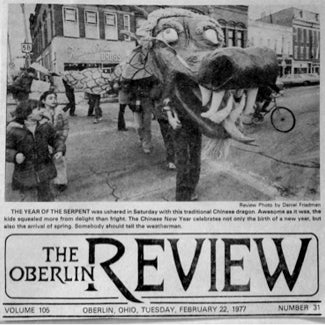
The next year Channing was gone, but Mark Baratta replaced him as Asia House’s resident technical wizard. Mark had the brilliant idea to make smoke come out of the Dragon’s nostrils. I cannot recall what chemicals he had in the bottles wired up inside the head—we’d almost certainly never get approval to do it today—but by blowing through a rubber tube, the dragon appeared to be smoking. Mark also modified the eyes so that they moved and lit up behind red lenses.
That dragon had a relatively long life. I spent my junior year in Japan, which then stretched into a second year. When I returned, the dragon was a bit battered but still usable. The secret of making smoke having been lost, Gerry Wilson took it upon himself to seek the guidance of Professors Bromund and Hawkins in the chemistry department, who apparently knew of the dragon and its features. Hawkins provided the necessary chemicals, which may or may not have included hydrochloric acid. Gerry recalls that Hawkins told him, in his charming English accent, to blow out, not breathe in.
Upon graduation, I was accepted as a Shansi Fellow and spent two years in Taigu, China. I then elected to take a third year back at Oberlin. At that time (1983-4), “returned reps” were housed in the Asia House apartments. One of the first things I did when I got back was to search the basement for the dragon. I was not disappointed. The dragon still had its tail and mane, though several cracks and dings made it look a bit long in the tooth. But through the efforts of a “new generation of Asia House residents,” among them Diane Atkinson, Sue Fessler, Hanh Le, and Gloria Guinto, the dragon was still in working order seven years after we built it.
In 2015 a group of former Asia House residents from the late 1970s held a reunion at Oberlin. I did not expect to find the dragon thirty years later. I am certain that our dragon had gone to where all good dragons go. But unsurprisingly, the spirit that had brought forth our dragon forty years earlier was alive and well in my Asia House friends.
Tags:
You may also like
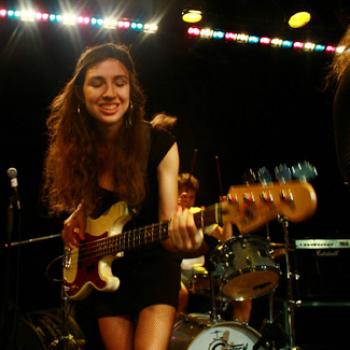
On finding a personal space
“Establishing meaningful relationships with supportive professors through hard work and dedication is the most important thing you can do as a new student.”
Arianna Gil ’16
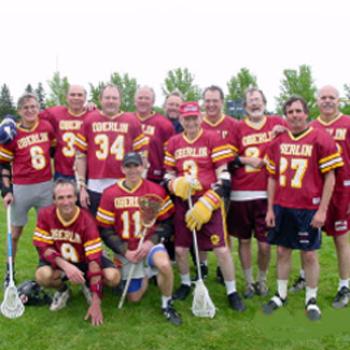
On road trips with lacrosse teammates
“As we were passing the Firestone tire factory, I remarked, “All I can smell is burning rubber.” A minute later a car passed, the driver gesturing frantically. Glancing around, we realized that our...
Hank Willems ’76
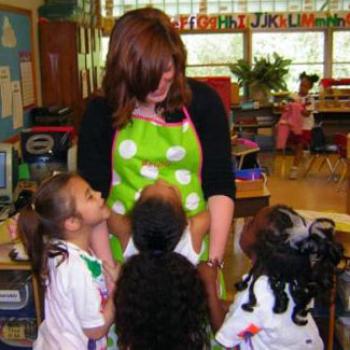
On education at Oberlin
“If allowing oneself to get to this point of utter submission to the universe of knowledge isn’t fearless, then I don’t know what is.”
Mathilda McGee-Tubb ’07